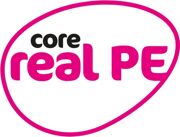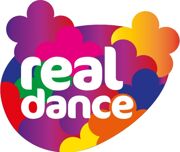- Home
- Learning
- Subjects
- Physical Education
Physical Education
At Portfield, we use an approach called real PE to teach physical education. It is an approach which links fundamental knowledge & techniques (ABC - agility, balance, coordination) and whole child development (Core Abilities - personal, social, cognitive, creative, health & fitness and physical). By teaching both aspects, we help children work towards becoming their competitive best, help them understand the importance of living a physically active life and help them become a well-rounded individual.
Pupils at Portfield receive two types of PE lesson. The first type focuses on learning fundamental knowledge & techniques (see progression documents below), including through gymnastics and dance. The second type of lessons are application lessons which focus on applying previously taught knowledge and techniques to competitive situations.
PE - Sequencing of Content
PE - Progression of Core Abilities



Real PE Lesson Structure
Warm-Up
During the first section of the lesson, the children will be both readying themselves physically for the lesson ahead and practicing and retrieving knowledge and techniques that they have learnt previously - either earlier in the current series of lessons or in previous units of work. The warm-ups increase in difficulty as the unit of work progresses but can also be tailored to individual children's needs if they are either a struggling or advanced learner. As the warm-ups progress, they focus on developing the core abilities of the whole child - personal, social, cognitive, creative and physical.
Knowledge and Technique Learning
During the 'knowledge and techniques learning' section of the lesson, the children focus on the fundamental movement knowledge or ABCs (agility, balance and coordination). The focus knowledge and techniques is explicitly modelled to the children by the teacher or using a video demonstration before the children work with a partner to practice. This knowledge and techniques have six stages of progression, from novice to expert. When children are practising techniques, there is an emphasis on fluency and control. Children will only be moved on to the next stage of learning once they can demonstrate this on a consistent basis.
Knowledge and Technique Application
Once the children have practiced a technique, they will then have an opportunity to apply it to a different situation. This will look different depending on the age of the children:
-
In the early years the technique is applied in a story-based activity. For example, the children may be going on a pirate adventure or 'riding' in a bike race.
-
In the middle years, the technique is applied in physical challenges that encourage the children to strive for their personal best.
-
In the older years, the technique is applied in small-sided competitive games.
Learning Review
At the end of the lesson, the children will review their learning. During this section of the lesson, the children will discuss what has gone well, what they have improved and what they need to improve next based on the learning goals and success criteria.
Knowledge and Technique Progression Documents
| Agility | Balance | Coordination |
|---|---|---|
| Ball Chasing | Seated | Footwork |
| Reaction | One Leg | Ball Skills |
| On a Line | Sending and Receiving | |
| Floorwork | ||
| Counter Balance | ||
| Jumping and Landing |
